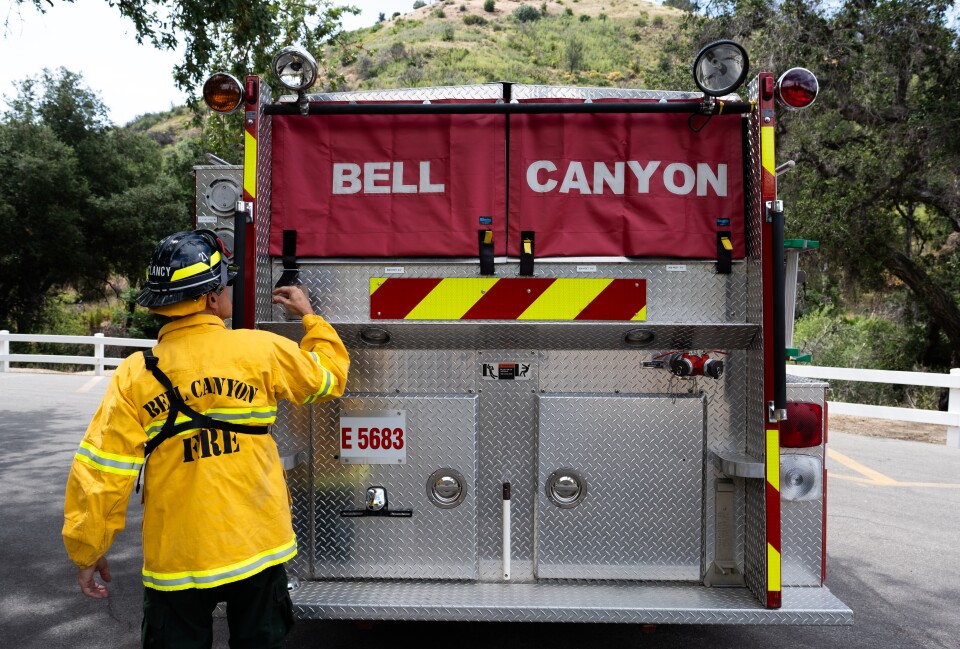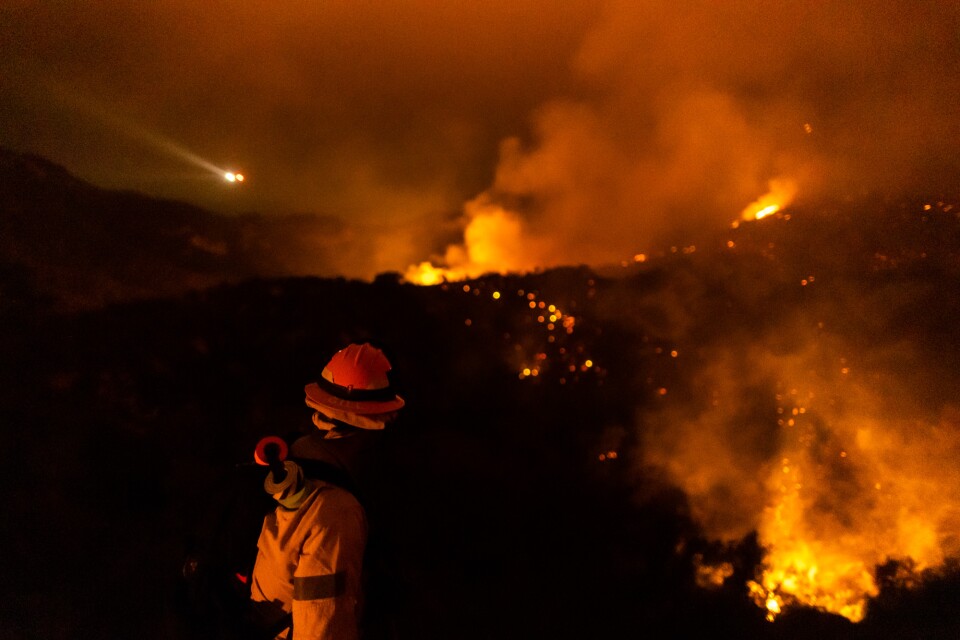Truth matters. Community matters. Your support makes both possible. LAist is one of the few places where news remains independent and free from political and corporate influence. Stand up for truth and for LAist. Make your year-end tax-deductible gift now.
5 Years After Devastating Woolsey Fire, Here’s What’s Changed

It’s been five years since the Woolsey Fire tore across Los Angeles and Ventura counties, killing three people and destroying more than 1,600 structures.
Since then, we’ve been forced to adapt to living with devastating fires year after year across the state, making things quite different now than they were on Nov. 8, 2018.

Here are a few of the things that have changed when it comes to living with fire in Southern California.
We fully understand how bad fires can be
The Woolsey Fire fundamentally changed our understanding of just how violent and fast moving fires in Southern California can be.
Not that the Thomas Fire and the Tubbs Fire the year before, or the deadly Cedar Fire in 2003, didn’t have an impact, but Woolsey was so shocking in its spectacle, tearing through one of the most populated regions of the country in less than 24 hours, that it solidified the feeling of just how unprepared we were for the new normal that was unfolding.

The Camp Fire, which was destroying the town of Paradise 415 miles north at the same time as Woolsey, contributed to that feeling across a broader swath of the state, even more so.
Since then, deadly, unstoppable conflagrations have become somewhat expected, brought on in many places by a combination of overzealous fire suppression, aging infrastructure, and extreme drought and heat exacerbated by climate change.
Our firefighting infrastructure has its limits
With the Woolsey and Camp fires burning at the same time, firefighting forces throughout the state were completely overwhelmed.
Only about 50% of the requested firefighting resources were sent to Woolsey, according to L.A. County’s after action report.

In the years that followed, repeated hundred thousand-plus-acre complexes maxed out both the number of aircraft available and people on the ground. And the long, arduous fire seasons have taken a toll on personnel as well, jeopardizing their health and wildfire response.
Residents have been forced to accept that there’s a limit to firefighting resources, and sometimes they just need to get out of the way and save themselves, as their homes are going to be lost.
Normal people feel the need to step in
Our firefighting limits were realized by many during Woolsey, as multiple communities felt abandoned during the fire as they expected their homes to be saved.
In response, some neighborhood groups bought trucks, hoses and other equipment, in an effort to lead their own firefighting efforts if they ever again felt abandoned during a crisis.
I covered one such group in Bell Canyon, who have gone through training, and plan on battling flames until professionals with gear show up.

Neither L.A. County nor Ventura County fire officials endorse regular citizens fighting fire, but the former has recognized the need to directly interface with these communities, and include them in the process of preparation and response.
They’re establishing a community brigade program to help ameliorate feelings of alienation. The goal isn’t to have normal folks fight fire, but to train them to help with home and brush prep in advance, and evacuations when needed. Establishing contact with people who know the community gives them an in, and will hopefully smooth communications.

“The goal for the program is to kind of show that this is a shared risk, and it's a shared responsibility to respond to that risk between the community members and the agencies,” said Keegan Gibbs, whose family lost their home in Malibu’s Point Dume community during Woolsey. He’s been involved with the creation of the program.
Relying on heavier air power
In 2021, a so-called quick reaction force made up of burly helicopters from Coulson Aviation was created to assist Ventura, L.A. and Orange counties on brush fires.
The program is partly funded by Southern California Edison, which was found responsible for starting Woolsey.
As soon as the alert goes out for a first-alarm brush fire, CH-47 Chinooks (which carry 3,000 gallons of water or retardant), along with other support aircraft, take off from nearby airports. The idea being that if they can hit fires early, they can help stop spread. They’re available 24/7, can access fires in treacherous terrain and can fly at night.
“It’s really helping,” said L.A. County Fire Capt. Sheila Kelliher Berkoh.

Emergency messaging systems still need to be improved
Effective emergency messaging during an unfolding crisis is notoriously difficult, and in L.A. County’s after action report for the Woolsey Fire, emergency agencies got knocked for their communication during the event.
Messaging during crisis can be clunky, as they're accidentally sent to people outside the area of concern, spreading confusion. And if you’re getting blasted by irrelevant messages all day, you might just ignore the one meant for you.
L.A. County Fire is trying a new system where they can alert people within specific high risk divisions, such as Topanga, Calabasas and Agoura. The hope is that they can use targeted messaging to more effectively coordinate among small groups, things like evacuation orders.
You can download the app and sign up.

Whether this system will be any better than Wireless Emergency Alerts or text based services, is unclear, though it’s worth giving a shot to see if it helps during a crisis.
Any cellular-based system won’t mean much if networks go down, so make sure you buy an emergency radio as well. Or, better yet, leave before evacuation orders have to be issued.
You don’t want to get caught on the road with flames coming for you, as could easily happen in an emergency situation in Topanga Canyon.
What did I miss?
What did the Woolsey Fire teach you? What do you think it changed here in Southern California?
Always feel free to send me a note via the Hearken link below.









